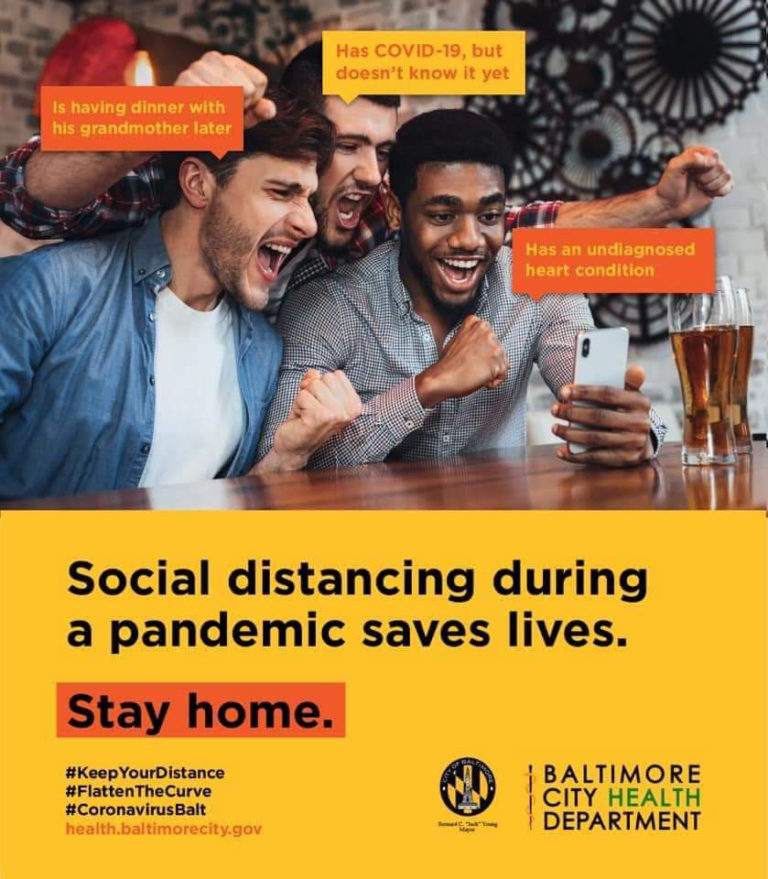
5 Lessons for Communicating About CoronavirusWritten by Susan Krenn | Johns Hopkins Center for Communication Programs Executive Director
The coronavirus pandemic has put the business of risk communication front and center. Every day, it seems, we are getting mixed messages from our leaders, messages that differ in their tone and content depending on who is talking.
In a situation full of unknowns, as with the early days of the Ebola outbreak in West Africa five years ago, sometimes communication is all we have. Good communication lets people know what they should do, how they can protect themselves and others and helps them balance their fears with concrete information they can use.
Here are some communication lessons to keep in mind as the coronavirus interrupts life as we know it. So much has already changed, with the closure of schools, restaurants and gyms, many workers being asked to stay away from the office, the cancellation of major life celebrations such as weddings and graduations and directives to keep our distance from one another. What is key is that we focus on how to help one another navigate the way forward.
- Build trust: People need information from sources with expertise and they need to hear from trusted public health experts at regular intervals. If incorrect information is shared, experts need to correct the record quickly to ensure that trust is maintained. And when too much time passes between communications, people tend to fill the void with inaccurate information from unreliable sources. Be honest about what you know – and don’t know – in a crisis.
- Have one set of messages: All spokespeople must be on the same page. This is crucial so that people know exactly what to do to reduce the spread of the virus. Otherwise, people make up their own minds about how to behave – which won’t slow the spread of disease.
- Counter myths and misinformation: Ignoring rumors and hoping that they dissipate on their own is a poor course of action, especially in a crisis. Create a system to dispel myths and correct the record by sharing the clear, accurate messages that experts have agreed on.
- Promote action: In an unprecedented crisis, some people just don’t know what to do and why to do it. Being anxious right now is completely normal, but we need to balance that with the ability to act to prevent paralysis. Giving them concrete things to do calms anxiety and promotes a restored sense of control. We’ve already seen some people change social norms, such as avoiding hugs and handshakes upon greeting. Our trusted leaders need to role model this behavior and talk about what else people can do to protect themselves such as vigorous handwashing, avoiding public events and settings and keeping your distance from others, especially older people who are particularly at risk for complications.
- Be empathetic: We are all in this together and we need communication that reflects this. The unknowns are scary, but helping people understand that they need to take action for the greater good can help foster community.
For more information on the coronavirus:
WHAT IS PANCAP?
PANCAP is a Caribbean regional partnership of governments, regional civil society organisations, regional institutions and organisations, bilateral and multilateral agencies and contributing donor partners established on 14 February 2001. PANCAP provides a structured and unified approach to the Caribbean’s response to the HIV epidemic, and coordinates the response through the Caribbean Regional Strategic Framework on HIV and AIDS to maximise efficient use of resources and increase impact, mobilise resources and build the capacity of partners.
What are the Global AIDS Strategy 2021–2026 targets and commitments?
If targets and commitments in the strategy are achieved:
- The number of people who newly acquire HIV will decrease from 1.7 million in 2019 to less than 370 000 by 2025
- The number of people dying from AIDS-related illnesses will decrease from 690 000 in 2019 to less than 250 000 in 2025.
- The goal of eliminating new HIV infections among children will see the number of new HIV infections drop from 150,000 in 2019 to less than 22,000 in 2025.
What are the 95-95-95 Targets for ending AIDS?
- 95% of People Living with HIV know their HIV status;
- 95% of people who know their status on treatment; and
- 95% of people on treatment with suppressed viral loads.
HELPFUL LINKS:
Global AIDS Strategy 2021–2026, End Inequalities, End AIDS
https://pancap.org/pancap-documents/global-aids-strategy-2021-2026-end-inequalities-end-aids/
Caribbean Regional Strategic Framework on HIV and AIDS (CRSF) 2019-2025
https://pancap.org/pancap-documents/caribbean-regional-strategic-framework-2019-2025/
